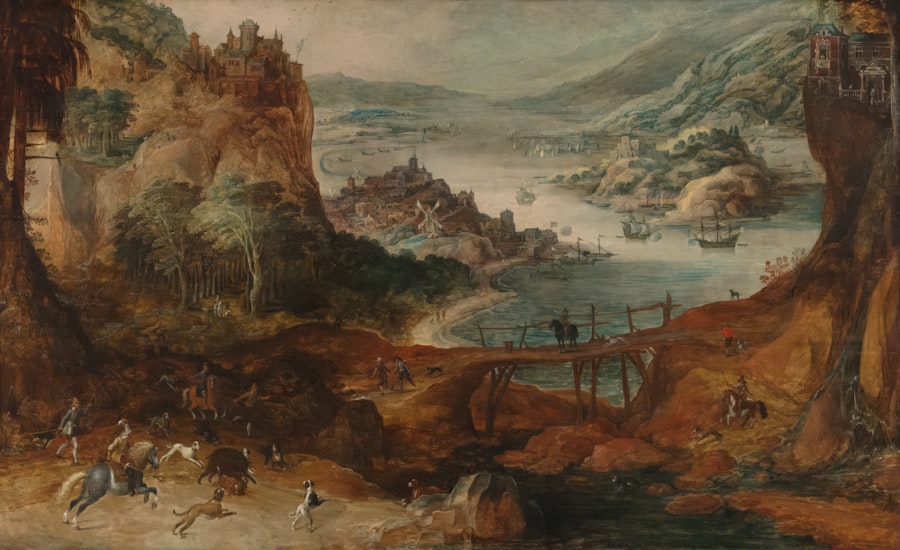The Strait of Magellan and the Drake Passage are two of the most significant maritime routes in the southern hemisphere, each playing a crucial role in navigation and trade. The Strait of Magellan, located between the southern tip of South America and Tierra del Fuego, serves as a natural waterway connecting the Atlantic and Pacific Oceans. In contrast, the Drake Passage lies to the south of the Strait, separating South America from Antarctica.
Both waterways are not only vital for maritime navigation but also rich in history, ecology, and cultural significance. These two passages have long captured the imagination of explorers, sailors, and scientists alike. The Strait of Magellan was named after the Portuguese explorer Ferdinand Magellan, who first navigated it in the early 16th century.
The Drake Passage, named after the English sea captain Sir Francis Drake, is known for its turbulent waters and unpredictable weather conditions. Together, they represent a gateway to some of the most remote and pristine regions of the world, making them essential for understanding both historical exploration and contemporary maritime activities.
Key Takeaways
- The Strait of Magellan is a navigable sea route located at the southern tip of South America, connecting the Atlantic and Pacific Oceans.
- The geography of the Strait of Magellan includes narrow channels, fjords, and unpredictable weather conditions, making it a challenging passage for ships.
- The Drake Passage is a body of water between South America’s Cape Horn and the South Shetland Islands of Antarctica, known for its rough seas and strong winds.
- The historical significance of the Strait of Magellan includes its discovery by Ferdinand Magellan in 1520 and its role as a major trade route during the Age of Exploration.
- The Drake Passage holds historical significance as the route taken by Sir Francis Drake during his circumnavigation of the globe in the late 16th century.
- Navigational challenges in the Strait of Magellan include strong tidal currents, narrow passages, and the presence of icebergs, requiring careful navigation by experienced sailors.
- Navigational challenges in the Drake Passage include the notorious “Drake Shake” characterized by rough seas and strong winds, making it a difficult passage for ships to navigate.
- The wildlife and natural attractions in the Strait of Magellan include diverse marine life such as whales, dolphins, and penguins, as well as stunning landscapes and glaciers.
- The Drake Passage is known for its rich marine biodiversity, including various species of whales, seals, and seabirds, making it a popular destination for wildlife enthusiasts.
- The modern-day use and importance of the Strait of Magellan lies in its role as a key shipping route for vessels traveling between the Atlantic and Pacific Oceans, bypassing the need to navigate around Cape Horn.
- The modern-day use and importance of the Drake Passage includes its significance for scientific research, tourism, and as a crucial passage for ships traveling to and from Antarctica.
Geography and characteristics of the Strait of Magellan
The Strait of Magellan is approximately 570 kilometers (about 350 miles) long and varies in width from 3 to 30 kilometers (2 to 19 miles). It is characterized by a series of narrow channels, islands, and fjords that create a complex navigational landscape. The strait is flanked by rugged coastlines and steep cliffs, with numerous islands dotting its waters, including the well-known Isla Grande de Tierra del Fuego.
The region is marked by its dramatic scenery, featuring lush forests, glacial formations, and a diverse array of geological features. The climate in the Strait of Magellan is predominantly cold and windy, influenced by the surrounding oceanic currents and the Andes mountain range to the west.
The strait serves as a crucial habitat for numerous marine species, including seals, dolphins, and a variety of fish. Additionally, its waters are frequented by migratory birds, making it an important area for ornithological studies.
Geography and characteristics of the Drake Passage

The Drake Passage is renowned for its formidable conditions and vast expanse, measuring approximately 800 kilometers (about 500 miles) wide at its broadest point. It connects the Atlantic Ocean to the Pacific Ocean and is often considered one of the most treacherous bodies of water in the world due to its strong currents and unpredictable weather patterns. The passage is characterized by deep oceanic trenches and underwater ridges, which contribute to its turbulent nature.
The geography of the Drake Passage is shaped by the convergence of several ocean currents, including the Antarctic Circumpolar Current, which flows around Antarctica and influences global climate patterns. This current creates rough seas and high waves, making navigation challenging for even the most experienced mariners. Despite these challenges, the Drake Passage is a vital route for vessels traveling to Antarctica, serving as a gateway for scientific research expeditions and tourism alike.
Historical significance of the Strait of Magellan
| Event | Significance |
|---|---|
| First European to navigate | Ferdinand Magellan in 1520, proving the existence of a navigable passage between the Atlantic and Pacific Oceans. |
| Importance for global trade | Provided a crucial route for ships traveling between the Atlantic and Pacific, avoiding the long and dangerous trip around Cape Horn. |
| Strategic importance | The strait has been a key strategic location for naval and military operations throughout history. |
| Scientific significance | The unique ecosystem and geography of the strait have made it an important area for scientific research and exploration. |
The historical significance of the Strait of Magellan cannot be overstated. It was first navigated by Ferdinand Magellan during his expedition to circumnavigate the globe in 1520. This monumental journey marked a turning point in maritime exploration, as it provided a new route for ships traveling between Europe and Asia without having to navigate around Cape Horn.
The strait quickly became an essential passage for trade and exploration during the Age of Discovery. Over the centuries, the Strait of Magellan has witnessed numerous historical events that shaped global trade routes. It served as a critical link for Spanish galleons transporting gold and silver from South America to Europe.
The strait’s strategic importance continued into the 19th century when it became a key route for whaling ships and later for steamships during the industrial era. Today, it remains a vital shipping lane for international trade, underscoring its enduring significance in maritime history.
Historical significance of the Drake Passage
The Drake Passage holds its own historical importance as a route that has been traversed by explorers, scientists, and adventurers for centuries. Sir Francis Drake was one of the first Europeans to navigate these waters in the late 16th century during his circumnavigation of the globe. His journey not only contributed to European knowledge of this remote region but also established a precedent for future expeditions to Antarctica.
In addition to exploration, the Drake Passage has played a pivotal role in scientific research. The passage has been a focal point for oceanographic studies due to its unique currents and marine ecosystems. Researchers have utilized this area to study climate change impacts on oceanic systems and marine biodiversity.
The historical significance of the Drake Passage extends beyond exploration; it has become a critical area for understanding global environmental changes.
Navigational challenges and considerations in the Strait of Magellan

Navigating through the Strait of Magellan presents several challenges due to its complex geography and unpredictable weather conditions. The strait’s narrow channels can be treacherous, with strong tidal currents that can change rapidly. Mariners must be adept at reading charts and understanding local conditions to safely traverse these waters.
Additionally, fog can roll in unexpectedly, reducing visibility and complicating navigation further.
Mariners must remain vigilant to avoid grounding or collisions with these hazards.
Despite these challenges, advancements in navigational technology have improved safety in recent years. Modern vessels are equipped with sophisticated GPS systems and radar that help mitigate some of these risks, allowing for safer passage through this historically significant waterway.
Navigational challenges and considerations in the Drake Passage
The Drake Passage is notorious for its rough seas and unpredictable weather patterns, making navigation particularly challenging. The convergence of multiple ocean currents creates powerful waves that can reach heights of over 30 feet during storms. Mariners must be prepared for sudden changes in weather conditions, including strong winds and heavy precipitation that can arise with little warning.
In addition to rough seas, vessels navigating the Drake Passage must also contend with icebergs and floating debris that can pose significant hazards. The presence of these obstacles requires constant vigilance from crew members who must be trained to respond quickly to changing conditions. Despite these challenges, many vessels successfully navigate this passage each year, thanks in part to improved weather forecasting technology and enhanced navigational equipment that help ensure safe passage through these tumultuous waters.
Wildlife and natural attractions in the Strait of Magellan
The Strait of Magellan is home to an impressive array of wildlife that thrives in its diverse ecosystems. The region’s cold waters support various marine species, including sea lions, fur seals, and several species of dolphins that can often be seen frolicking in the waves. Additionally, migratory birds flock to this area during certain seasons, making it a prime location for birdwatching enthusiasts.
Beyond its marine life, the strait’s rugged landscapes offer breathtaking natural attractions. The surrounding fjords are dotted with glaciers that calve into the sea, creating stunning visual displays as icebergs drift by. The lush forests along the coastline provide habitat for terrestrial wildlife such as guanacos and Andean condors.
For nature lovers and adventure seekers alike, the Strait of Magellan presents an unparalleled opportunity to experience some of South America’s most pristine natural environments.
Wildlife and natural attractions in the Drake Passage
The Drake Passage is equally rich in wildlife and natural beauty despite its reputation for rough seas. This region serves as an important feeding ground for various seabirds, including albatrosses and petrels that glide gracefully over the waves. These birds are often seen following ships as they navigate through the passage, providing a spectacular sight for those on board.
In addition to avian life, marine mammals such as whales frequently traverse these waters during their migratory patterns. Species like humpback whales and orcas can be spotted during certain times of the year as they travel between feeding grounds in Antarctica and warmer waters further north. The natural attractions within the Drake Passage extend beyond wildlife; its dramatic seascapes offer stunning views that captivate those who venture into this remote part of the world.
Modern-day use and importance of the Strait of Magellan
In contemporary times, the Strait of Magellan continues to serve as a vital shipping route for international trade. Its strategic location allows vessels to avoid navigating around Cape Horn, significantly reducing travel time between major ports in Europe and Asia. This efficiency has made it an essential corridor for cargo ships transporting goods across oceans.
Moreover, tourism has become an increasingly important aspect of the Strait’s modern-day significance. Adventure cruises attract travelers seeking to explore its breathtaking landscapes and unique wildlife. These tours not only provide economic benefits to local communities but also raise awareness about conservation efforts needed to protect this fragile ecosystem from environmental threats.
Modern-day use and importance of the Drake Passage
The Drake Passage remains crucial for modern maritime activities, particularly as a gateway to Antarctica. Research vessels frequently traverse these waters en route to conduct scientific studies on climate change, marine biology, and glaciology in one of Earth’s last frontiers. This research is vital for understanding global environmental changes that impact ecosystems worldwide.
Additionally, tourism has flourished in recent years as more travelers seek out expeditions to Antarctica via the Drake Passage. Cruise lines offer unique experiences that allow passengers to witness breathtaking landscapes while contributing to conservation efforts through responsible tourism practices. As interest in polar regions grows, so does recognition of the importance of preserving these fragile environments for future generations while ensuring safe navigation through their challenging waters.
When navigating the treacherous waters at the southern tip of South America, mariners often face a choice between the Strait of Magellan and the Drake Passage. Each route offers its own set of challenges and advantages. The Strait of Magellan, a natural sea route located between the mainland of South America and Tierra del Fuego, is known for its narrow channels and unpredictable weather, making it a more sheltered but complex passage. In contrast, the Drake Passage, which lies between the southern tip of South America and Antarctica, is infamous for its rough seas and strong winds, presenting a more direct but perilous route. For those interested in exploring the geographical and historical significance of these two maritime routes, a related article can be found on MyGeoQuest. You can read more about these fascinating passages by visiting this article on MyGeoQuest.
WATCH HERE: Drake Passage: Earth’s Deadliest Waters Revealed
FAQs
What is the Strait of Magellan?
The Strait of Magellan is a navigable sea route located in the southern part of Chile. It connects the Atlantic and Pacific Oceans, and is named after the Portuguese explorer Ferdinand Magellan who first navigated it in 1520.
What is the Drake Passage?
The Drake Passage is the body of water between the southern tip of South America and the South Shetland Islands of Antarctica. It is known for its rough seas and strong winds, and is considered one of the most challenging maritime routes in the world.
What are the main differences between the Strait of Magellan and the Drake Passage?
The main difference between the two is their location and navigational challenges. The Strait of Magellan is located further north and provides a more sheltered and protected route compared to the open and often turbulent waters of the Drake Passage.
Which route is commonly used for maritime travel?
The Strait of Magellan is the preferred route for maritime travel between the Atlantic and Pacific Oceans due to its relative calm and protection from the harsh weather conditions of the Drake Passage.
Are there any historical or cultural significance associated with these routes?
Both the Strait of Magellan and the Drake Passage have historical significance as important maritime routes for early explorers and traders. They have also played a significant role in the exploration and colonization of the Americas.
